- Mon - Sat: 9:00
- Call Us: +90 (538) 894 00 91
- [email protected]
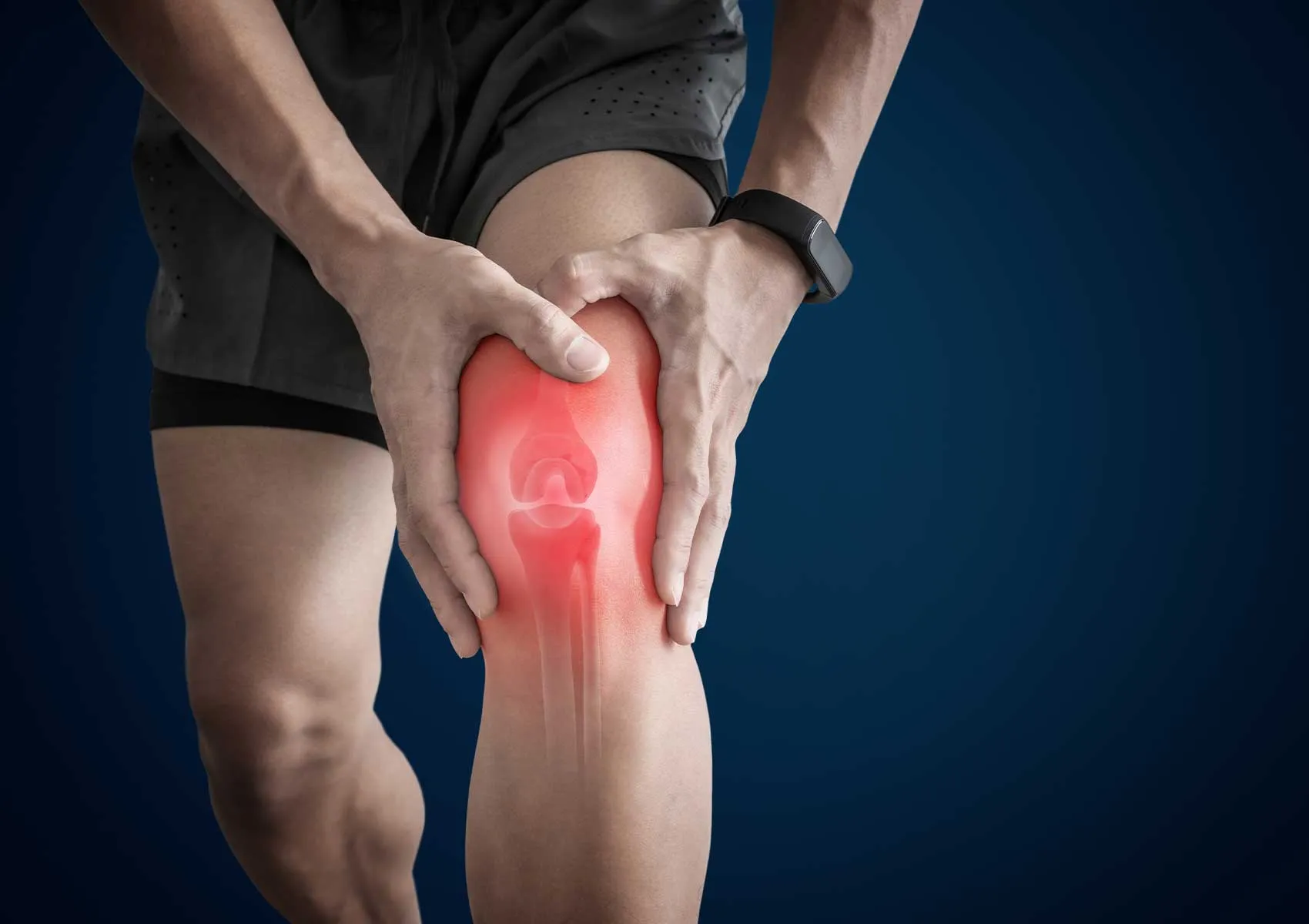
Knee Joint Diseases
The anterior cruciate ligament (ACL) is a 3-3.5 cm long ligament located in the middle part of the knee joint. Its main function is to prevent the knee from sliding forward or rotating.
The anterior cruciate ligament is usually injured after a twisting movement of the knee joint on a fixed foot (indirect trauma). A popping sound may be heard from the knee joint at the time of injury. In the acute phase after the injury, swelling and pain develop in the knee due to bleeding. The athlete cannot continue the game.
In patients who do not receive treatment during the acute phase, the swelling and pain in the knee decrease within 2-3 weeks. In these untreated patients, symptoms such as a recurring feeling of looseness in the knee, weakness, or complaints related to repeated twisting may occur during sports activities that require sudden turns such as football and basketball. This clinical situation is called cruciate ligament insufficiency. In such cases, new meniscus tears and cartilage injuries may occur even if they were not present in the acute phase.
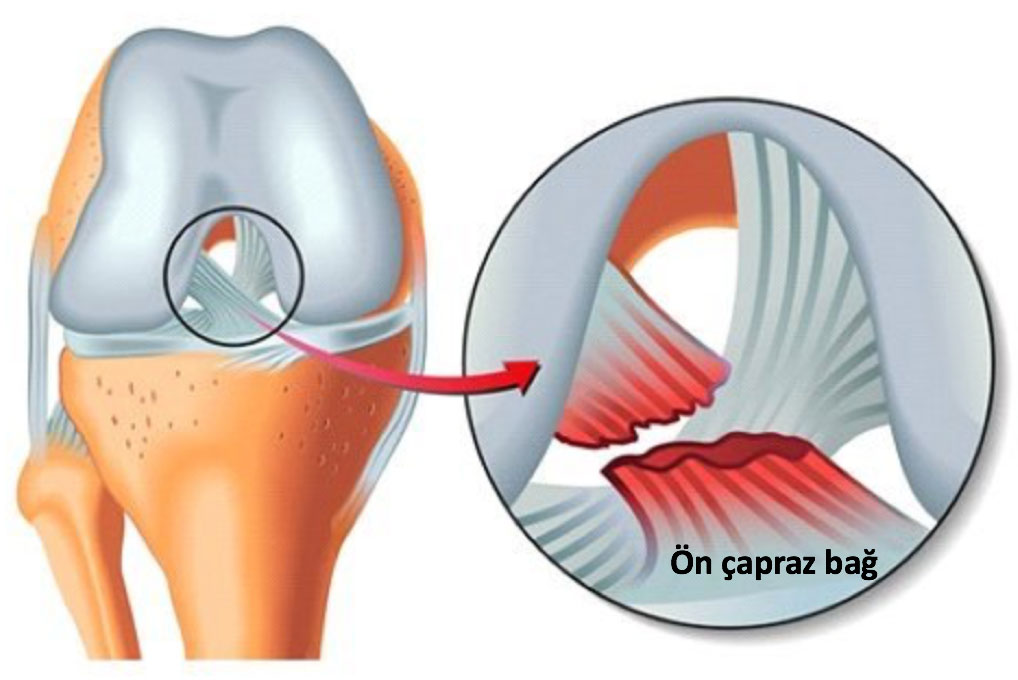
Treatment decisions are made based on the patient’s age, activity level, the presence of additional injuries, and whether the tear is partial or complete.
Surgical treatment should be applied to active-young patients who have sustained the injury and wish to continue sports activities. During the operation, meniscus tears and cartilage injuries are also treated simultaneously.
The anterior cruciate ligament often tears in its middle portion. Due to disrupted blood supply and joint fluid preventing primary healing, the torn ligament cannot heal on its own or be repaired by stitching.
There are many different techniques used in anterior cruciate ligament surgery. In the most commonly used technique, tendons taken from different parts of the body are prepared and passed through bone tunnels created using arthroscopic (closed) technique and fixed to the bone. As a result, a new ligament is formed that provides similar function.
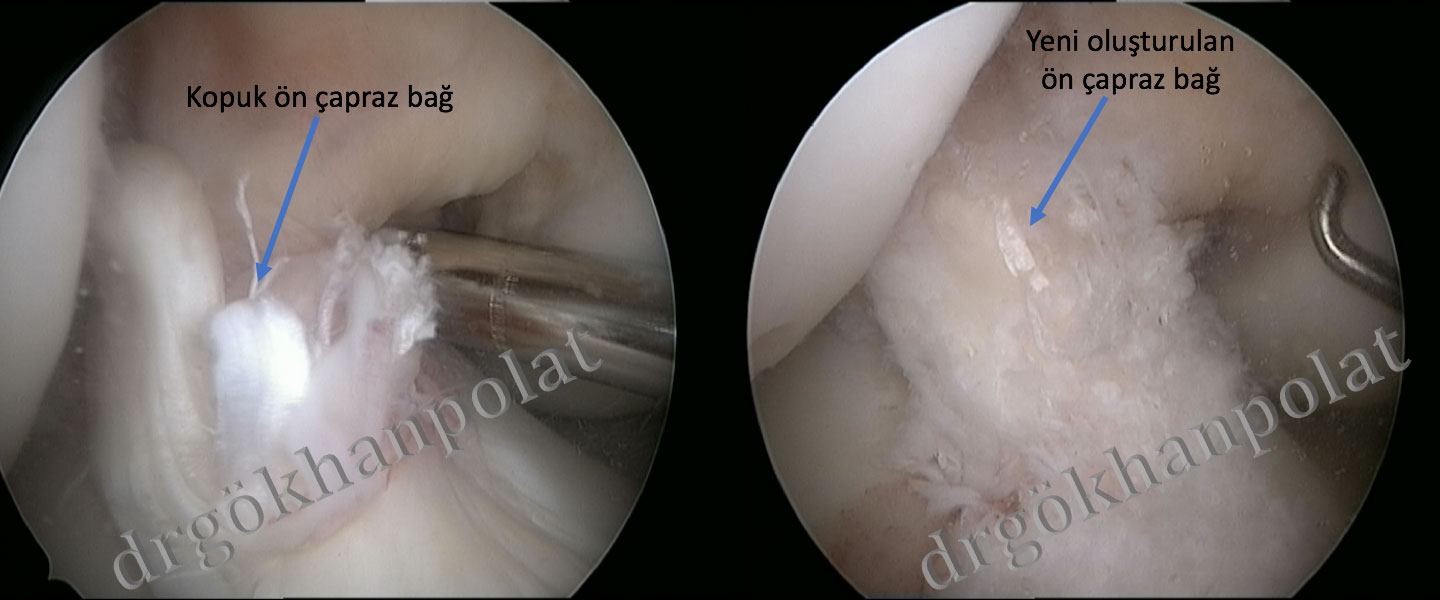
Figure: Arthroscopic anterior cruciate ligament reconstruction surgery
The posterior cruciate ligament is the strongest ligament of the knee joint that prevents the tibia from moving backward. It is commonly injured during high-energy trauma such as motorcycle accidents or as part of a multi-ligament injury in contact sports. Isolated injuries are rare.
Surgical treatments should be applied in multi-ligament injuries. In isolated injuries, treatment decisions are made considering factors such as the grade of the injury, cause of trauma, age, and expectations of the patient. In grade 1 and grade 2 (partial injury) cases, non-surgical treatments (special braces and physical therapy) can be successful. Surgical treatment should be applied in patients with grade 3 injuries and high functional expectations.
The medial collateral ligament is located on the inner side of the knee joint. It is one of the most frequently injured ligaments, especially seen in football and skiing injuries.
It may be injured alone or together with other ligaments (such as the ACL) or the menisci. Injuries may be classified as grade 1 (no structural discontinuity), grade 2 (partial tear), or grade 3 (full tear).
Treatment decisions depend on the grade of injury and the presence of additional injuries (such as ACL tears). Non-surgical treatment is usually sufficient for grade 1 and 2 injuries. However, surgical treatment is necessary in grade 3 injuries and in cases accompanied by ACL injuries or meniscus tears.
Multi-ligament injuries refer to cases where more than one ligament in the knee joint is injured. They usually occur after high-energy trauma (such as traffic accidents or skiing injuries).
Since it resembles a knee dislocation, vascular injury should be carefully assessed. Staged (two sessions) or single-session surgical treatments may be applied in treatment.
Meniscus:
The menisci are two C-shaped fibrocartilaginous structures in the knee joint — one medial (inner) and one lateral (outer).
The meniscus tissue has limited blood supply histologically. Therefore, tears located near the inner third of the knee joint have poor natural healing potential. However, tears closer to the outer part of the joint (near the joint capsule) have higher healing potential.
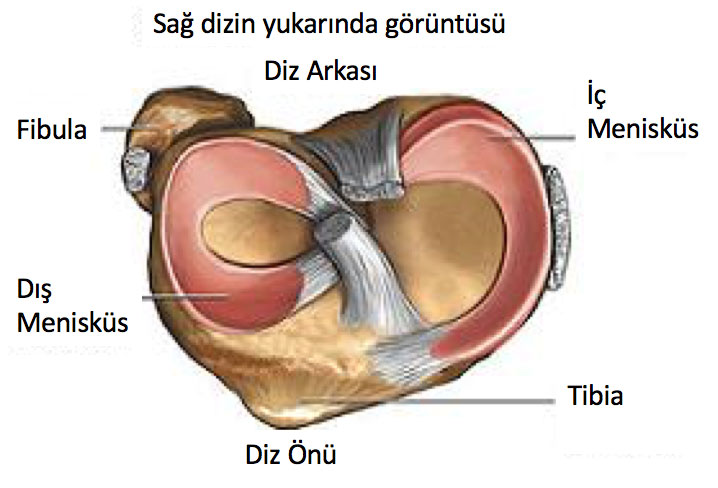
Figure 1: Appearance of menisci
The meniscus has critical roles in load transmission, shock absorption, and enhancing joint congruence. Preserving the meniscus is essential for cartilage survival. It is known that degenerative arthritis (osteoarthritis) develops more rapidly in patients who have lost meniscus tissue.
Meniscus tears are among the most common pathologies seen in the knee joint. They are generally classified into two types: degenerative and traumatic tears.
Degenerative meniscus tears are commonly seen in middle-aged or older patients and can occur during daily activities such as going down stairs or squatting. Non-surgical treatments should be prioritized in these patients.
Traumatic tears are more commonly seen in young to middle-aged patients and occur due to sports injuries. These are often accompanied by other injuries such as ACL or MCL tears.
Meniscus tears most commonly present with knee pain. The pain is typically localized over the joint line at the medial or lateral meniscus. In traumatic or mechanically symptomatic degenerative tears, swelling can occur inside the joint. Additionally, movement restriction or locking of the knee joint may be observed.
Patients with similar complaints should be examined by an orthopedic specialist. After a clinical examination, standing knee X-rays and standard knee MRI can diagnose meniscus tears.
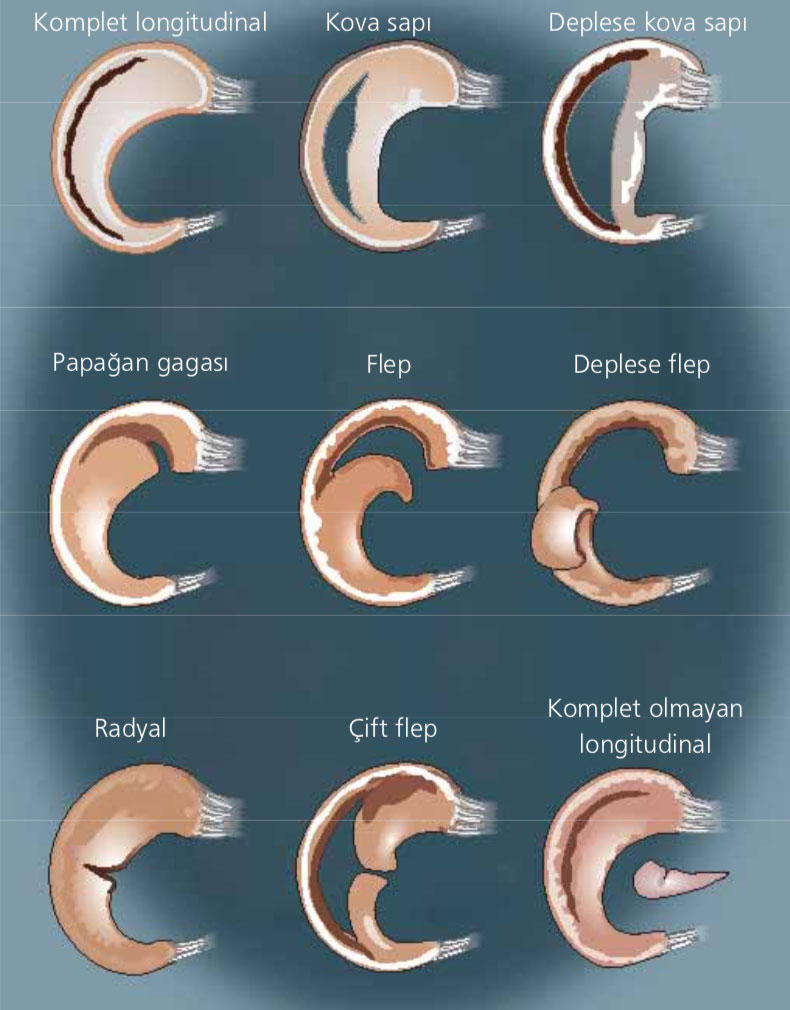
Figure 2: Meniscus tears can appear in different types.
Degenerative meniscus tears are frequently seen in middle-aged or older patients and can occur during daily activities such as going down stairs or squatting. Initial treatment includes non-surgical approaches (anti-inflammatory medications, rest, physical therapy, intra-articular injections). If symptoms do not improve after six weeks of non-surgical treatment and there is no advanced osteoarthritis, surgical treatment can be applied.
Traumatic tears are more common in young to middle-aged patients and result from sports injuries. These tears are often accompanied by ACL or MCL injuries. Treatment decisions are based on several factors including associated injuries, time of occurrence, location, size, and type of the meniscus tear.
The primary goal in the surgical treatment of meniscus tears is to preserve the meniscus tissue, but...